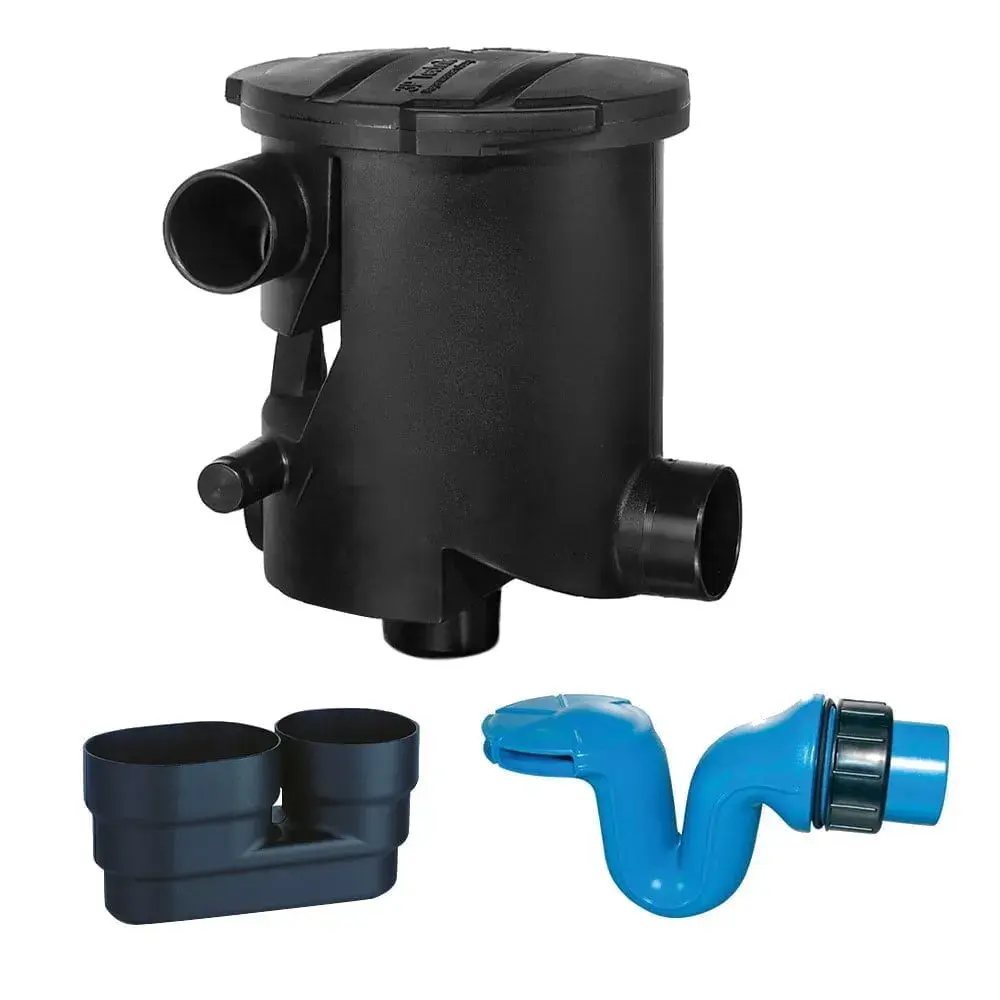Correct Fill Line for Chemical Tanks, when filling chemical and water storage tanks, the correct fill line is important for the safety of persons and equipment and prevent loss of product. The fill line is a pipe system attached to the tank and generally made from PVC, CPVC or PE pipe to ensure compatibility with the chemicals being stored in the tank.
These fill pipes are available as bsp sockets, PN16 flanges with an optional chemical-grade valve with camlock or tanker connection for quick connecting and disconnecting after filling.
Tanker fill lines are available as standard up and over internal and external pipework, anti-foam fill lines for foaming chemicals and pumped suction lines which run from low level in the tank to low level outside the tank.
External Chemical Tank Fill Lines
Exterior chemical tanks fill lines are mounted onto the external wall of the tank, mounted to the outside of the chemical tank, run up the side and fill from the top of the tank. These fill pipes either terminate in a BSP socket or a PN16 flange which allows fittings and valves to be fitted to connect to a tanker.
View our external fill pipes here
Anti-Foaming Fill Pipes
Anti-foaming fill pipes are supported inside the tank and run to the floor to prevent foaming for chemical such as firefighting foam concentrate. These fill pipes run up the outside wall of the tank and through the roof of the tank.
Suction Lines
Some installations require the pipework to go from low level in the tank to the tank roof to connection to pipework in the factory or in the plant. These suction lines are internally mounted in the tank and terminate in either a BSP socket or a PN16 flange on the top of the tank.
Combination Pipework
This combination pipework gives a fill on the outside of the tank for tanker connections but runs to the low level inside the tank reducing foaming during filing.
Overflows
Overflow pipework is generally required to prevent overfilling the chemical, wastewater, or process tank. These can be a high-level overflow or pipped to low level terminating in a flange for plant room installations. In a bunded tank a bund alarm is recommended letting plant maintenance personnel know the tank has overfilled.
Suitable Venting of For the Tank
Correct venting of the tank is required as tanker fill lines generally pump into the tank at a greater rate than a standard lid vent tank allow air within the tank to escape. Some chemicals such as HCL will need to be vented to a scrubber.
The Correct Fill Line for Chemical Tanks for your storage tanks depends on the chemical you are storing, how it's delivered, and the requirements for your tank and pipework within the factory. These pipes will need to be mounted to the tank securely and- for more details on the correct fill lines for your next chemical storage tank, please get in touch with us today.
Posts By Topics
- Blog (303)
- Chemical Storage Tanks (118)
- Chemical Dosing Tanks (114)
- Chemical Tanks (114)
- Water Tanks (58)
- Rainwater Harvesting Tanks (43)
- Vertical Rainwater Tanks (31)
- Vertical Storage Tanks (31)
- Cone Bottom Tanks (19)
- Conical Cone Tanks (18)
- Rainwater Harvesting (17)
- Water Bowsers (15)
- Horizontal Tanks (14)
- Potable Water Tanks (13)
- Farming (9)
- Case Studies (8)
- Industrial Storage Tanks (7)
- Liquid Fertilser Storage Tanks (6)
- WRAS Approved Potable Tanks (6)
- Wine and Beer Production (6)
- Horizontal Transport Tanks (5)
- Microbrewery (5)
- Rainwater (5)
- Category 5 Break Tanks (4)
- Cider Production (4)
- Mixer Tanks (4)
- Molasses Tanks (4)
- Polyethylene tanks (4)
- Rainwater Filter Kits (4)
- SPECIALIST & BESPOKE TANKS (4)
- Bunded Tanks (3)
- Slimline Tanks (3)
- WRAS Approved (3)
- Clarification Tanks (2)
- Crosslinked Polymer Tanks (XLPE) (2)
- Fertiliser Tanks (2)
- Sump Tanks (2)
- Tank Installation (2)
- Water Butt (2)
- underground water tanks (2)
- ACCESSORIES & FITTINGS (1)
- ATV & UTV SPRAYING UNITS (1)
- Above Ground Effluent Tanks (1)
- Bespoke Tank Frames (1)
- Category 5 Turret (1)
- Caustic Soda Tanks (1)
- Closed Top Bunded Tanks (1)
- Craft beer (1)
- Effluent Tanks (1)
- Enduramaxx (1)
- Ferric Chloride Tanks (1)
- Fire Safety Regulations (1)
- Fire Sprinkler Water Storage Tanks (1)
- Industrial Water Tank (1)
- Open Top Bunded Tanks (1)
- Open Top Cone Tanks (1)
- Open Top Vertical Tanks (1)
- Polyethylene Potable Water Tanks (1)
- Polyvinylidene Fluoride (PVDF) Tanks (1)
- Polyvinylidene Fluoride Tanks (PVDF) (1)
- Pressure Washers (1)
- Pro Series Spot Sprayers (1)
- RWH (1)
- Sodium Hydroxide Storage Tanks (1)
- Sprayer Fill-up Tanks (1)
- Uncategorised (1)
- liquid fertiliser tank (1)
Sign up to the newsletter
enduramaxx.marketing
Related Posts
Chemical Filling & Distribution Lines
Chemical Filling & Distribution Lines for surface treatment, suitability of tanks and pipework for...
A Short Guide To Wastewater & Effluent Requirements In The Food & Drink Industry
Water is used throughout the food and drink industry for both cleaning and production processes....
Are Customised Chemical Dosing Tanks Available? Chemical Dosing Tanks & Bund Tanks
Customised Chemical Dosing Tanks – chemical dosing is used in conjunction with several types of...
Related Products
From £1,080.00 inc. VAT
£900.00 exc. VAT
From £1,344.00 inc. VAT
£1,120.00 exc. VAT
From £768.00 inc. VAT
£640.00 exc. VAT
£480.00 inc. VAT
£400.00 exc. VAT





